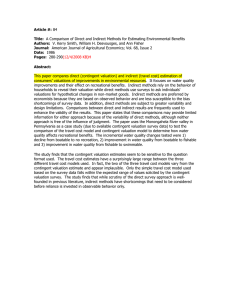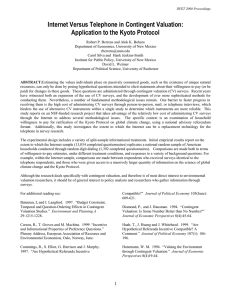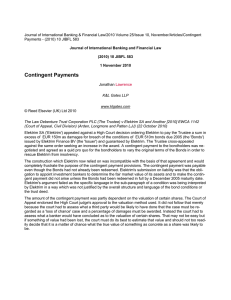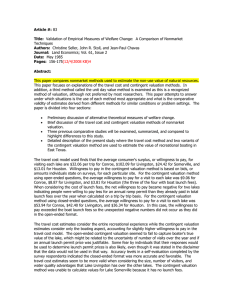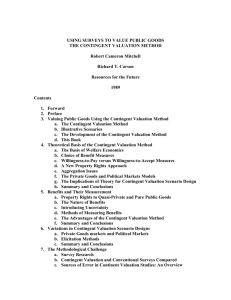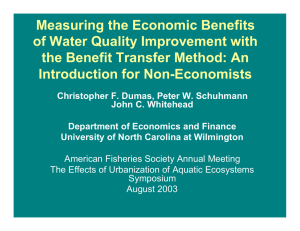TOPIC 9 ENVIRONMENTAL PLANNING
advertisement
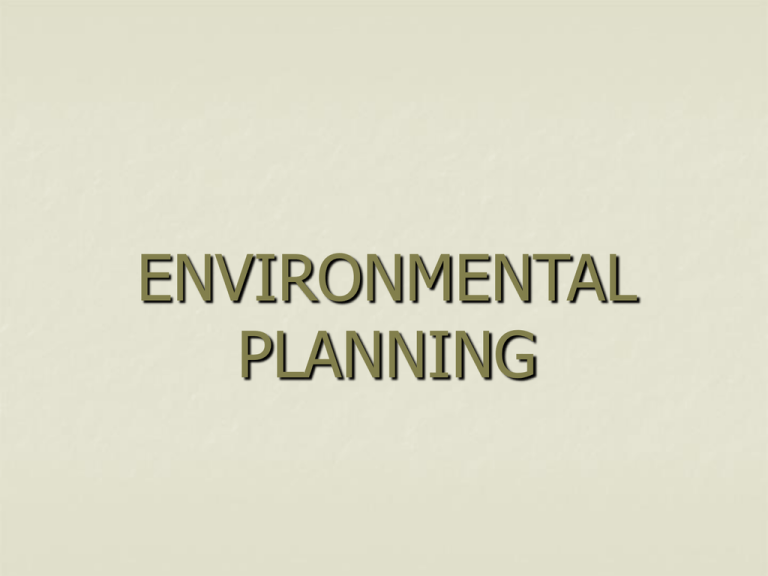
ENVIRONMENTAL PLANNING TOPICS 1. 2. 3. Environmental philosophies The old paradigm The new paradigm (sustainable development) Environmental law Environmental planning practice Travel cost method Surrogate methods Contingency valuation methods Environmental impact statement Environmental philosophies RADICAL CONSERVATIVE TECHNOCENTRISTS Cornucopians •Developers •Construction •Industry •Citizen (property Rights coalitions •Politicians (right) ECOCENTRISTS Accommodators Soft technologists Deep environmentalist •Planners •Government officials •Politicians (moderate & left) •Citizens (suburban) •Environment Consultants •Environmental lobby •Green Peace •Sierra Club Environmental Policy Source: ICMA, 2000 ENVIRONMENTAL LAW NATIONAL ENVIRONMENTAL POLICY ACT (1969) AIR WATER WASTE NATURE NATURAL RESOURCES SAFETY LAND USE & ENVIRONMENTAL PLANNING Travel Cost Method: Valuing Parks Distance/ Travel cost Consumer Surplus Park fee Park revenue # Visits Contingent Valuation Method: The Value of Clean Water Contingent Valuation Method Contingent Valuation Method Contingent Valuation Method Economic benefits of Environmental Project Price Marginal Consumer Surplus (benefit) $ with $ without Revenue Before After HH connections Surrogate Prices of Environmental Goods Surrogate price for a nice view P a bX sqfeet bX lsize bX dist The parameter estimated for distance can be used as proxy to value The nice view of a residence. ECO. DEV. TRADE OFF GAME Which aspect wouldn’t you trade for eco. development? Mountain preservation Nice mountain view Community character Clean Air Clean water Open space Farm land Environmental Impact Assessment: The Leopold Matrix PROJECT ACTIONS Design E N V I R O N M E N T Biotic Abiotic Physical Social Site preparation Construction Monitoring The EIS methodology 1. 2. 3. Check list of impacts (positive negative) Measuring magnitude (1-10): How much impact the project will have in the environment. Measuring importance (1-10): Local vs. regional; reversible vs. irreversible, etc.



